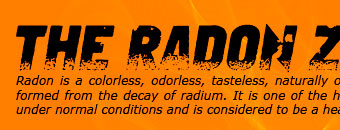 |
 |
 |
||||
|
||||||
| Call: 417-844-0942 | ||||||
|
»Shipping Port Security This page provides an overview of how cargo containers are checked for radioactive material that could pose a potential threat to our national security. Overview U.S. shipping ports handle a range of cargo including legitimate hazardous material such as chemicals and radioactive material and must take actions to ensure the safe handling and security of such material while on site. Ports also have to guard against smuggled or unwanted radioactive material entering the U.S. Each year, millions of tons of scrap metal, semi-finished metal, and metal products are imported to the U.S. Ports must ensure that these metal products are not contaminated with radioactive material. Also, cargo containers must be checked for radioactive material that could pose a potential threat to our national security. As a result of the events of September 11, 2001, all levels of government implemented additional actions to ensure port security and to minimize the threats. That included potential threats posed by radioactive material. The Federal government increased the licensing requirements on the import and export of radioactive material. The Federal government also developed and implemented an enhanced strategy to identify, target, and inspect cargo containers before they reach U.S. ports. Officials prescreen all cargo, and any shipment that poses a potential threat is physically inspected with radiation detectors either prior to or upon arrival. The U.S. government created a partnership with over 7,000 businesses, including most of the largest U.S. importers. Under this partnership program, legitimate companies that conduct regular business with the U.S. have increased their own security to prevent terrorists from infiltrating their shipments. This system of prevention, early detection and immediate action helps keep our ports safe from terrorist threats. Radiation detectors used at ports include: Personal Radiation Detector: a small, but highly sensitive device that sounds an alarm when radiation is detected. More than 10,500 are carried by federal officers and agents at U.S. ports of entry and highway checkpoints. Radiation Portal Monitor: a non-intrusive ways to screen trucks, cargo containers, rail cars, and passenger vehicles for radiation coming from nuclear devices, dirty bombs, special nuclear materials, natural sources, and isotopes commonly used in medicine and industry. The government plans to expand upon the existing 473 monitors. Radiation Isotope Identifiers: a hand-held instrument capable of detecting emissions from radioactive sources, including nuclear, medical and industrial isotopes. Security officers use this device to determine the exact identity of a radioactive source that has triggered an alarm. Large-scale Gamma-ray/X-ray Imaging Systems: an imaging systems that use radiation to reflect images of the contents of a cargo container, rail car, vehicle or trailer-truck. Radiation-Treated Materials Food, mail, and other items are treated with radiation to kill pathogens. The materials that are treated do not become radioactive, although the processes that create them are potential sources of worker exposure or environmental contamination. |
|
|||||